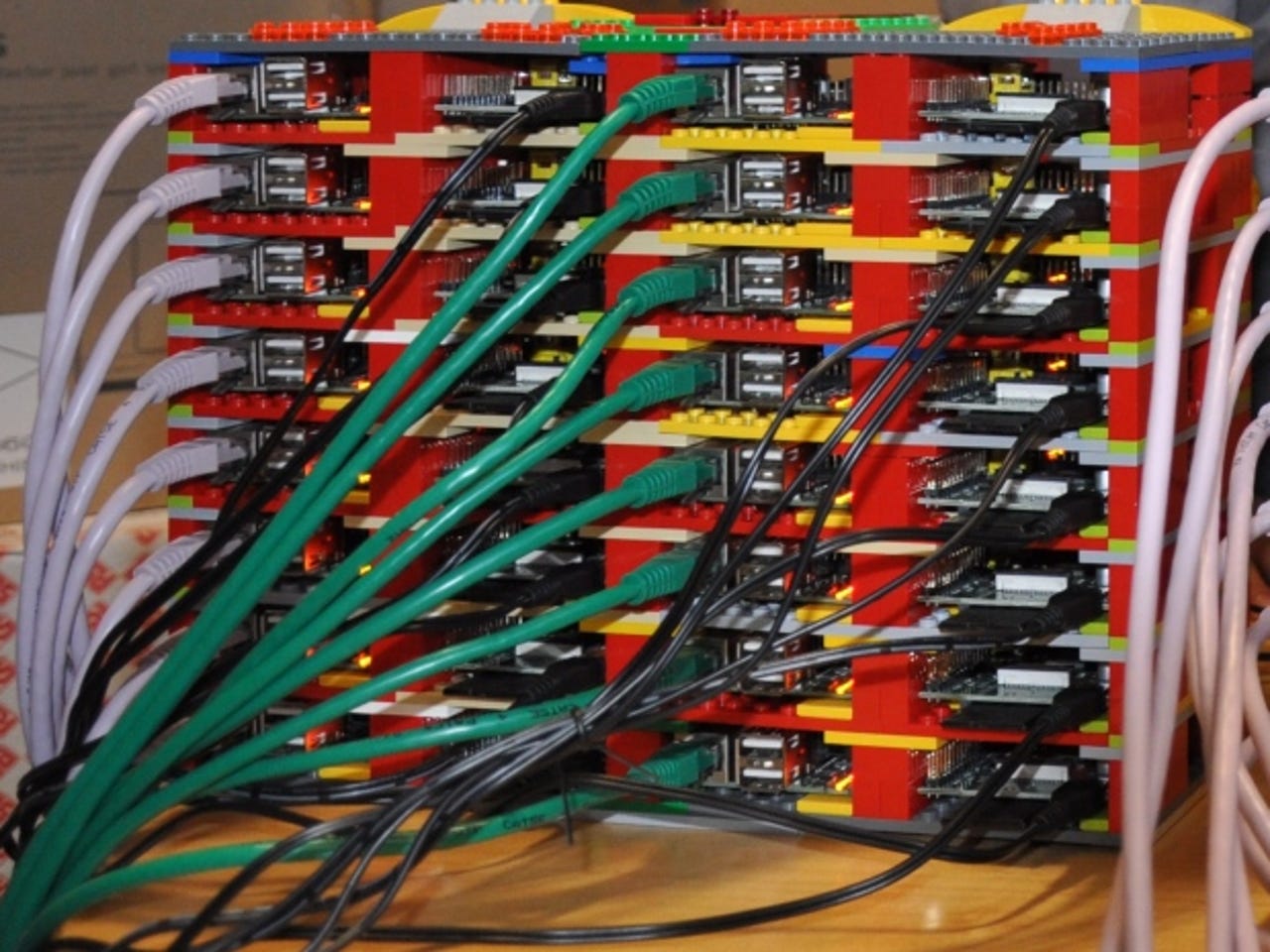Raspberry Pi meets Lego in supercomputer-like cluster: Photos


A team of computational engineers at the University of Southampton has built a working supercomputer-like cluster out of 64 Raspberry Pi boards.
The cluster sits on racks made of Lego, runs off a standard mains socket, and has a total memory of 1TB, derived from 16GB SD cards on each Raspberry Pi. Its total cost was £2,500.
"As soon as we were able to source sufficient Raspberry Pi computers, we wanted to see if it was possible to link them together into a supercomputer," said Professor Simon Cox, who led the project and even enlisted the help of his six-year-old son James in the design.
The computer uses a system called MPI (Message Passing Interface) to communicate between nodes using Ethernet. According to Professor Cox, the machine's first task was to calculate Pi on the Raspberry Pi using MPI.
The Raspberry Pi is a £25 Linux-based computer designed by Eben Upton of the Raspberry Pi Foundation. It is intended to help kids learn to code and to encourage home-brew computing projects. Since its launch in February, computing fans have been desperate to get their hands on the device, with some starting up events called 'Jams' to show off inventions based on the Raspberry Pi.
The Raspberry Pi supercomputer at Southampton has been named 'Iridis-Pi' after the university's Iridis HPC machine, which has 8064 processor cores providing over 72 TFlops.
"The team wants to see this low-cost system as a starting point to inspire and enable students to apply high-performance computing and data handling to tackle complex engineering and scientific challenges as part of our ongoing outreach activities," Professor Cox said.
The team has published a guide to help people build their own supercomputer using the Debian software installed on the Raspberry Pi.
Above, Professor Cox and his son James show off their handiwork.
"The Raspberry Pi is great fun and it is amazing that I can hold it in my hand and write computer programs or play games on it," James said.
The cluster isn't the first time Lego has been put to use with the Linux PC. Enterprising scout Isabelle Herbert came up with an enclosure for the Raspberry Pi and shared the design.